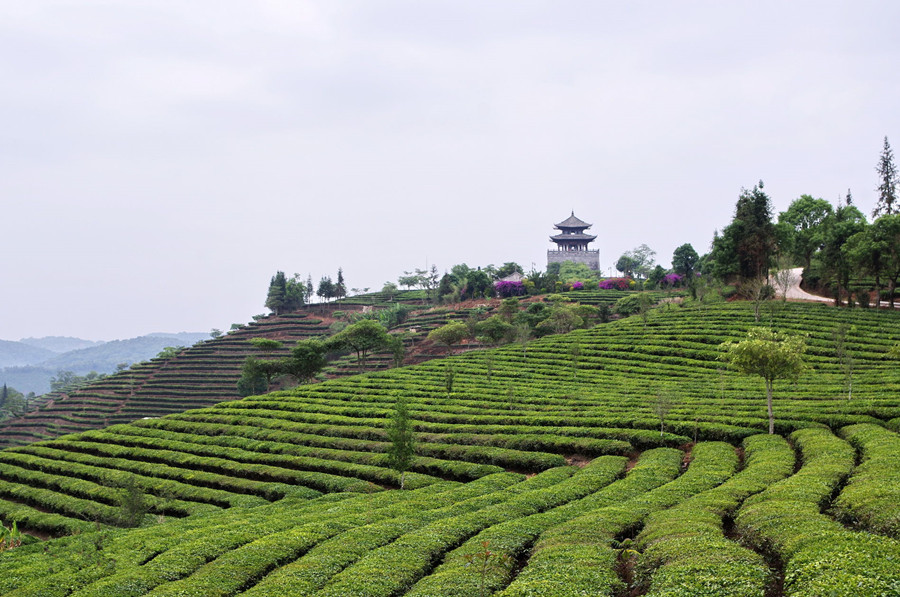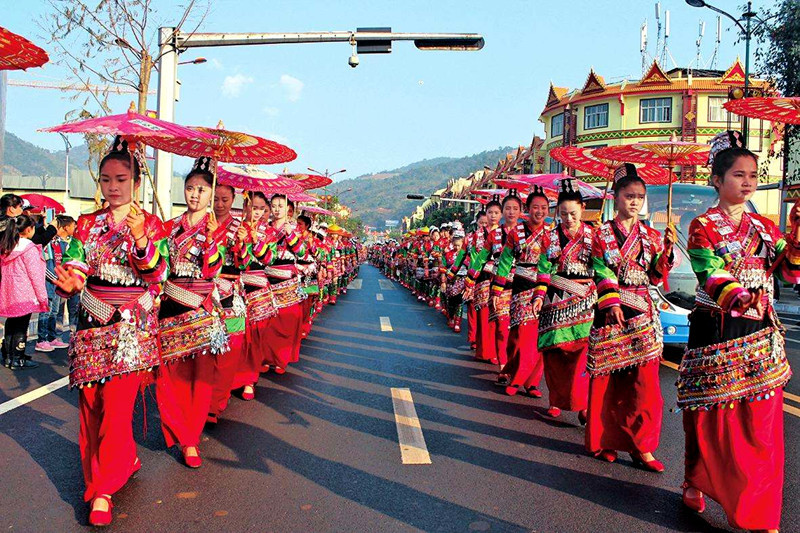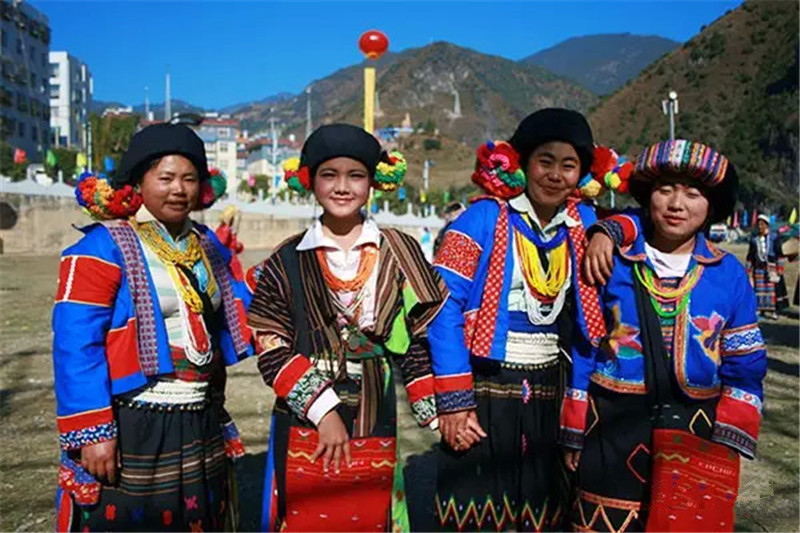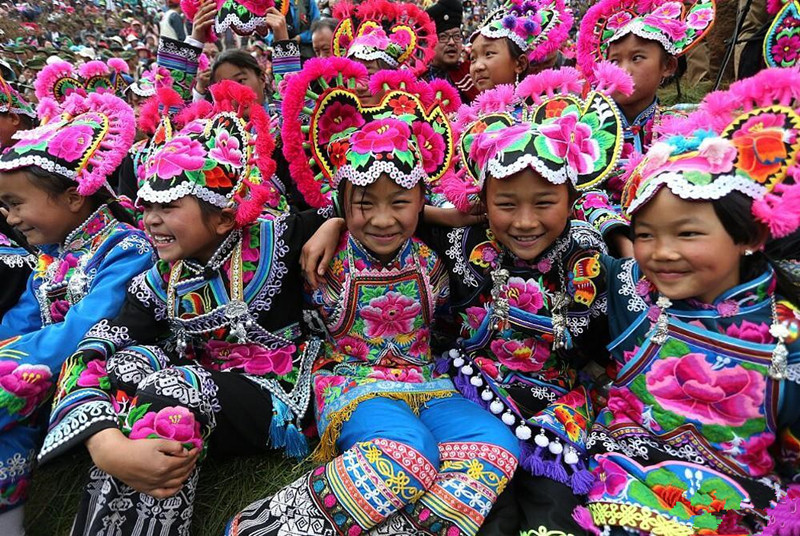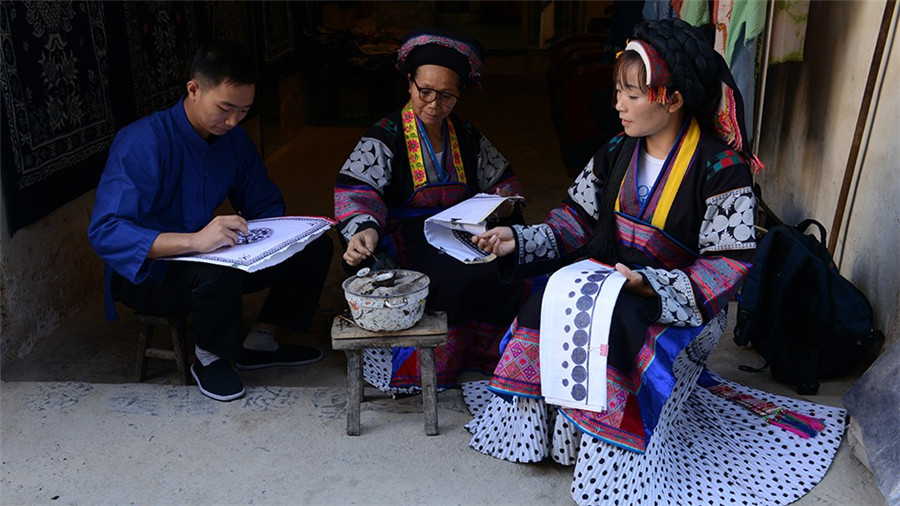
Yunnan Facts
Yunnan, Dian for short, is located in the southwestern border of China. Kunming is the capital. The Tropic of Cancer traverses southern Yunnan Province. It is an inland region with low latitudes, and is an important part of the Yangtze River economic belt. It is adjacent to Guizhou and Guangxi in the east, Sichuan in the north, Tibet in the northwest, and borders Myanmar in the west, Laos and Vietnam in the south. Yunnan has 25 border counties bordering Myanmar, Laos and Vietnam, with a border line of 4060 kilometers. Yunnan is a window and gateway for China to Southeast Asia and South Asia.
Basic Information
| Chinese Name | 云南 |
| English Name | Yunnan |
| Location | The most southwestern province in China |
| Provincial capital | Kunming |
| Area | 394,100 square kilometers |
| Population | 47,705,000(in 2016) |
| Famous Cities | Kunming, Dali, Lijiang, Shangri-La, Yuanyang, Jianshui, Xishuangbanna |
| Language | Southwest Mandarin |
| Climate | Tropical and Subtropical Monsoon Climate |
| Zip Code | 650000 to 674600 |
| Airports | 14 airports(in 2017), several are under construction |
| GDP | 1486.995 billion yuan(in 2016) |
| GDP Per Capita | 31,397 yuan(in 2016) |
| Famous Universities | Yunnan University, Kunming University of Science and Technology, Yunnan University of Finance and Economics |
| Titles | Plant Kingdom, Animal Kingdom |
| Main Lakes | Dianchi Lake, Fuxian Lake, Erhai Lake, Lugu Lake |
| Major Rivers | Lancang River(Mekong), Jinsha River(River of Golden Sands), Nujiang River(Salween), Honghe River(Red River) |
| Culture | Ancient Dian Culture, Nanzhao-Dali Culture, Dongba Culture, Dai Culture, Yi Culture |
| UNESCO | Lijiang Ancient Town(in 1997), Three Parallel Rivers Nature Reserve(in 2003), Stone Forest(in 2007), Honghe Hani Rice Terraces(in 2013) |
| Administrative Divisions | Eight Prefecture-level Cities and Eight Autonomous Prefectures |
Geography
Yunnan is the most southwestern province in China, with the Tropic of Cancer running through its southern part. The province has an area of 394,100 square kilometers, 4.1% of the nation’s total. The northern part of the province forms part of the Yunnan–Guizhou Plateau. The province borders Guangxi and Guizhou in the east, Sichuan in the north, and the Tibet Autonomous Region in the northwest. It shares a border of 4,060 kilometers with Burma in the west, Laos in the south and Vietnam in the southeast.
The terrain is largely mountainous, especially in the north and west. A series of high mountain chains spreads across the province. There is a distinct canyon region to the west and a plateau region to the east. Yunnan’s major rivers flow through the deep valleys between the mountains. The average elevation is 1,980 meters. The mountains are highest in the north where they reach more than 5,000 meters; in the south they rise no higher than 3,000 meters. The highest point in the north is the Kawagebo Peak in Deqin County on the Diqing Plateau, which is about 6,740 meters; and the lowest is in the Red River Valley in Hekou County, near the Vietnamese border, with an elevation of 76.4 meters.
Climate
Yunnan has a generally mild climate with pleasant and fair weather because of the province’s location on south-facing mountain slopes, receiving the influence of both the Pacific and Indian oceans, and although the growing period is long, there is little arable land. See Agriculture in Yunnan. January average temperatures range from 8°C to 17°C; July averages vary from 21°C to 27°C. Average annual rainfall ranges from 600 mm to 2,300 mm, with over half the rain occurring between June and August. The plateau region has moderate temperatures. The western canyon region is hot and humid at the valley bottoms, but there are freezing winds at the mountaintops.
Best Time to Visit
The best time to travel in Yunnanis in spring and autumn, especially March to April, and September to November. In spring (March to May), Yunnan has the large daily temperature difference changing from 12 to 20 ℃. The month of May is likely to be the rainiest month. Summer (June to August) in Yunnan will not be very hot and winter in Yunnan is never too cold. Autumn is the harvest season of most fruits and flowers. Tourists can get a lot during their trips.
1. Kunming
With favorable weather all year round, Kunming is a beautiful city worth traveling, especially from March to October-the best time to visit Kunming when blooming flowers, ripe fruits and festival activities all gather together.
2. Dali
The best time to visit Dali is right from Mar to Oct, from the early springtime to the mid-autumn period. With a moderate climate, Dali is friendly to tourists who could not quickly adapt the weather in China.
3. Lijiang
Lijiang enjoys a temperate climate year around. Lijiang’s rainy season begins in May and ends in October, with the heaviest and most recurrent rainfall periods occurring during July and August. Autumn is regarded as the best season to visit Lijiang. In fact, any time during the year is suitable for traveling, depending on the kind of traveling experience and sites you want to see.
4. Shangri-la
Through the end of spring and early summer, it is the most beautiful time of Shangri-La because of the full bloom of rhododendron (but the bloom time may delay along with the change of weather). In the middle of June, there are wild flowers in blossom, such as irises.
5. Yuanyang
The core area of Honghe Hani Rice Terrace is Yuanyang Rice Terrace, spring, summer, autumn and winter, different scenery in four seasons. It is available to visit Yuanyang all year round, but the best time to visit Yuanyang is in winter(from November to next April). In winter, there is only water in paddy field. With the change of sunray, terrace presents different beautiful scenery. Sea of cloud often appears at these months. If you want to experience rice transplanting, come and visit Yuanyang Terrace in late April.
6. Jianshui
The climate in Jiangshui is temperate in winter, tourists can go to Jianshui anytime. However, the best time to visit Jianshui are March to April and September to November, when the temperature and rainfall are favorable.
7. Xishuangbanna
The best time to visit Xishuangbanna is during the dry season (from November to April), when the weather is agreeable and the temperature is mild. If you would like to taste the rich tropical fruit here, traveling during the period from June to September is a good choice.
Travel Tips
1. The sunshine in Yunnan is too strong during the day that you’d better take your sunscreen and sunglasses. Also you should drink more water, eat more fruit, and prevent dehydration.
2. Go to Yunnan in March, you are supposed to wear cotton jersey and a thicker coat, cotton trousers and over-trousers. In winter and spring, daily temperature difference is large in Yunnan, so you need to take coats and sweaters.
3. August in Yunnan is generally rainy season, you’d better wear thin coat and bring rain gear. If you want to go to Jade Dragon Snow Mountain in Lijiang, Meili Snow Mountain in Diqing or Haba Snow Mountain in Shangri-la, you should take thicker cotton-padded clothes. Lijiang has a large temperature difference between morning and evening, it is generally to put on your thick coat or down jacket in the morning and evening.
Diverse Minorities
Yunnan is known as one of the birthplaces of human beings, and the remains of the Yuanmu Man found in the province date back 1.7 million years. Furthermore, countless places of historic interest are scattered around the province. Yunnan is inhabited by such 26 ethnic groups as the Han, Dai, Bai, Yi, and Hani, making it the province with the most nationalities in China. Each ethnic minority has its unique, colorful customs.
Best Places and Activities in Yunnan
When preparing to travel in Yunnan, Kunming-Dali-Lijiang-Shangrila is undoubtedly a classic route. Classic Tours in Yunnan.
1. Kunming, the capital of Yunnan Province, is the political, economic and cultural center and also the transport and communication hub of the province. With a history more than 2,400 years, it owns its importance to the fact that is was the gateway to the well-known South Silk Road that facilitated trade with Tibet, Sichuan, Myanmar and India.
Activities: Kunming 99 Horticultural Expo Garden parades, Yunnan ethnic village song and dance performance, Yunnan ethnic village torch festival activities (only be held during the torch festival), and dance “the Impression of Yunnan” directed by the famous dancer Yang Liping, Jixin Feast dance (吉鑫宴舞).
2. Dali, a famous historical and cultural city. Many of the architectures of the city were built of marble from the ore nearby, and that is why it is also called a city of Dali Stone(marble). Marble buildings, marble streets, marble wall foundations and marble wells make the city so bright and limpid as if it is a tranquil fairyland.
Activities: “The Courses of Bai Nationality” song and dance performances (“白族三道茶”歌舞表演), Butterfly Dream large-scale song and dance performances, Imaging Dali large subject-live performance.
3. Lijiang, including the heritage site of Lijiang Ancient Town as well as picturesque attractions nearby surroundings. In 1998, Lijiang Ancient Town was inscribed into the World Heritage List by the World Heritage Commission of the UNESCO. The Commission called it an exceptional ancient town set in a dramatic landscape which represents the harmonious fusion of different cultural traditions to produce an urban landscape of outstanding quality.
Activities: Mountains Rivers Show (丽水金沙) large-scale song and dance performances, ancient Naxi Dongba music concert, Impression Lijiang by Zhang yimou, Lugu Lake song and dance performance Mosuo Bonfire Party(摩梭情篝火晚会), Lijiang Eternal Love (丽江千古情).
4. Shangri-La, a earthern paradise, is characterized by towering snow-capped mountains, lush forests, vast gorges and idyllic lakes. The beautiful scenery described by Hilton made the name stick in popular memory and arouses a certain curiosity and mystery whenever it is heard.
Activities: song and dance Dreamy Shangri-la(梦幻香格里拉), the Tibetan Home Visit(藏民家访).

 7 Days GolfingTour
7 Days GolfingTour
 8 Days Group Tour
8 Days Group Tour
 8 Days Yunnan Tour
8 Days Yunnan Tour
 7 Days Shangri La Hiking
7 Days Shangri La Hiking
 11 Days Yunnan Tour
11 Days Yunnan Tour
 6 Days Yuanyang Terraces
6 Days Yuanyang Terraces
 11 Days Yunnan Tour
11 Days Yunnan Tour
 8 Days South Yunnan
8 Days South Yunnan
 7 Days Tea Tour
7 Days Tea Tour
 8 Days Muslim Tour
8 Days Muslim Tour
 12 Days Self-Driving
12 Days Self-Driving
 4 Days Haba Climbing
4 Days Haba Climbing
 Tiger Leaping Gorge
Tiger Leaping Gorge
 Stone Forest
Stone Forest
 Yunnan-Tibet
Yunnan-Tibet
 Hani Rice Terraces
Hani Rice Terraces
 Kunming
Kunming
 Lijiang
Lijiang
 Shangri-la
Shangri-la
 Dali
Dali
 XishuangBanna
XishuangBanna
 Honghe
Honghe
 Kunming
Kunming
 Lijiang
Lijiang
 Shangri-la
Shangri-la
 Yuanyang Rice Terraces
Yuanyang Rice Terraces
 Nujiang
Nujiang
 XishuangBanna
XishuangBanna
 Spring City Golf
Spring City Golf
 Snow Mountain Golf
Snow Mountain Golf
 Stone Mountain Golf
Stone Mountain Golf

